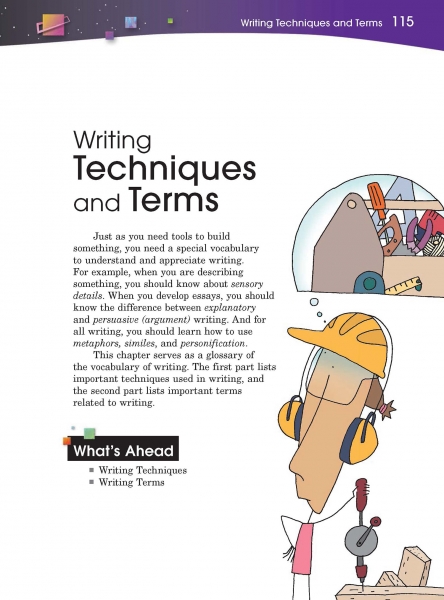Page 115 from

Start-Up Activity
Display these four techniques: oxymoron, sarcasm, paradox, and foreshadowing and the four sentences below. Ask your students which sentence is an example of each technique (or download and distribute the activity).
- An ominous ceiling of dark clouds hovered over the mansion. A strong, cold wind gave Allison goosebumps. (foreshadowing)
- The hard work produced a good ache. (oxymoron)
- “Pardon me, Your Royal Highness,” her little brother said, crossing his eyes and bowing to her mockingly. (sarcasm)
- The more research I did, the less I seemed to understand. (paradox)
Discuss the students’ responses. Then read and discuss the introduction on page 115. Inform students that this chapter explains techniques like the four above.
Think About It
“Good prose is like a window pane.”
—George Orwell
Chapter Opening Downloads:

Start-Up Activity
Display these four techniques: oxymoron, sarcasm, paradox, and foreshadowing and the four sentences below. Ask your students which sentence is an example of each technique (or download and distribute the activity).
- An ominous ceiling of dark clouds hovered over the mansion. A strong, cold wind gave Allison goosebumps. (foreshadowing)
- The hard work produced a good ache. (oxymoron)
- “Pardon me, Your Royal Highness,” her little brother said, crossing his eyes and bowing to her mockingly. (sarcasm)
- The more research I did, the less I seemed to understand. (paradox)
Discuss the students’ responses. Then read and discuss the introduction on page 115. Inform students that this chapter explains techniques like the four above.
Think About It
“Good prose is like a window pane.”
—George Orwell


